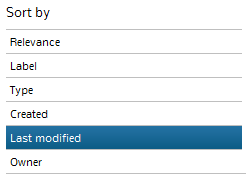Managing Activity Streams
 Franz Jachim on Thu, 02/16/2012 - 19:09
Franz Jachim on Thu, 02/16/2012 - 19:09 The central piece of a collaborative social network is the activity stream. In it´s basic form, the activity stream is a chronological list of content, that displays the activities of users and applications. In the main consumer social networks, activity streams contain the status updates of the people you follow, including their posts of images, videos or links to interesting online sources.
In an enterprise social network, the activity stream typically conveys business related content, including notes, links to files, bookmarks, business events, application statuses and other machine generated alerts.
For both, consumer and business activity streams, it is common, that the elements within the stream are subject to comments from other users. As well, activity streams give users the means, to signal affirmation of content through minimal, one-click, interaction (e.g. the "like" button).
For both, consumer and business activity streams, it is common, that the elements within the stream are subject to comments from other users. As well, activity streams give users the means, to signal affirmation of content through minimal, one-click, interaction (e.g. the "like" button).

Business benefits of Activity Streams
The submission and consumption of information via Activity Streams has become a dominant mode of communication in the consumer web. Specifically for young users, the importance of activity stream-based communication has got ahead of email communications. Corporations have lagged behind this trend initially, but with the introduction of enterprise social networks they pull a lot of business benefits from activity streams:
- Activity streams make work in progress and work done visible to the collaborating group of users
- Activity streams create a particular form of business- or workplace awareness through the provision of rich contexts of work
- Activity streams capture, store and expose informal and transient conversations about business topics or decision backgrounds, representing important fundaments for the retention of corporate know-how and the applicability of social business analytics
- Activity streams unburden the overstretched email inbox and transfer siloed and redundant email exchange together with artefacts from other information- and communication sources into an aggregated, centralised state
Downsides of Activity Streams
However, there are downsides with activity streams:
- What overcomes the fragmentation of information spread across many business applications, introduces at the same time a new, eventually even bigger abundance of information in the integrated activity stream. Unlike in consumer social networks, enterprise activity streams can´t afford discretionary cut-offs or arbitrary omitting of information objects from the activity stream.
- A multitude of information sources contributing into the activity stream accelerate the speed of information objects appearing in the Activity Stream.
The idea of solving the information overload problem through the sole existence of an activity stream is like putting out the fire with gasoline. Activity streams need significant functional enhancers to become manageable.
Management of Activity Streams in Refinder
Let´s have a look, how these problems are tackled by Refinder:
Under the "Things" button in the main menu, Refinder exposes your overall activity stream. This streams contains all posts ever added to your Refinder account in chronological order.
Besides this main activity stream, Refinder holds activity stream subsets for each individual Collection:
open a Collection to access the collection-specific activity stream. As the collection acts as a container of a particular work context, it provides an activity stream, which already is focused on this particular work context only.
open a Collection to access the collection-specific activity stream. As the collection acts as a container of a particular work context, it provides an activity stream, which already is focused on this particular work context only.
The management of each Activity Stream in Refinder is facilitated by powerful organizational tools:
First of all, there is searching, sorting and filtering. Each of these tools is applicable discretely or in conjunction with the others. Means, you can run a full-text search across an activity stream, followed by a sort, which rearranges the list of search results (for example by creation date or relevance instead of the "last modified" date, which is the default sort order). Alternatively, filter after a search, sort after filtering or sort after search.

Furthermore, there are Refinder´s bulk operation functions, allowing you to select multiple items from your activity stream after you performed a search, filtering or sorting action in order to add them to another collection, remove them from a collection or to delete them. Finally you can create a new collection from search results while running a search across your entire inventory of Things.

In a nutshell, Refinder helps you to manage information through
- Provision of multiple Activity Streams, each one focused on it´s specific work context
- Functionality to conveniently search, sort and filter Activity Streams
- Functionality to apply bulk operations (e.g. deletion or addition to other collections) to multiple elements within an Activity Stream.
Tags:
